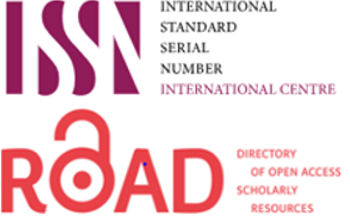The Relationship between Phylogenic Typing and Antimicrobial Susceptibility Patterns forEscherichia coliIsolatedfrom UTIs atMany Hospitals in Baghdad City
DOI:
https://doi.org/10.58897/injns.v30i2.275Keywords:
Urinary tract infections --- enterobacterial repetitive intergenic consensus PCR (ERIC-PCR) --- E. coli --- Antibiotic resistance --- MDR --- Urinary tract infections --- enterobacterial repetitive intergenic consensus PCR (ERIC-PCR) --- E. coli --- Antibiotic resistance --- MDRAbstract
Objective:The current study aime to isolate Escherichia colifrom urinary tract infections(UTIs) in many Baghdad hospitals. The study concentrate on phylogenic groups and this was done based on triplex PCRmethod by primers besieged to three genetic markers, chuA, yjaA and TspE4.C2. Evaluate the relationship of phylogenic groups of E. coli isolates with the antibiotic-non sensitive patterns. Methodology:Four hundredof E.coli bacteria isolated from urine samples from five hospitals in Baghdad city include: Ghazi AL-Hariri, Ibin- Al-Beledi , AL-Iskan , AL-Nooman and AL-Yarmoke hospitals. Phylogenetic categorization of E. coli isolates was completed by by means ofearlier reported triplex PCR-based on phylotypingprocedureusing primers besieged at three markers, chuA, yjaAand TspE4.C2. Phylogenetic combination was done on the starting point of the existence or nonexistence of the3 DNA fragments as follows: chuA–, TspE4.C2–, group A; chuA–, yjaA–, TspE4.C2+, group B1; chuA+, yjaA+, group B2; chuA+, yjaA–, group D. Because two possible profiles can be obtained for the groups A, B2, and D. Fifteen antibiotics second-hand for all foremost groups and their individual generations were used in this paper adjacent to all bacterial isolates. Results: The isolates ofE.colifrom UTI were distributed within thephylogroups B2 (43%);phylogroups D (28.25%);phylogroups A (24%) and B1 (3.5%), so phylogenic group B1 was prevalent among male patients of AL-Yermouk hospital ( 14%), followed AL-Iskan (3.75)% so, isolation rate of E.coli were higher among age (11-20 ) years (31.75 %), also(11%) were sensitivity to antibiotics, whilst (75.25%) were classified as extensive drug resistance pathogens, but (13.75% )were multidrug resistance and in Karkh areas, the frequency of phylogeneticB2 was (59.88%), followed phylogenetic A and D were ( 68.75 and 48.78%) respectively as compared to Rusafa areas were prevalence phylogenetic B2(40.12%),followedphylogenetic D and A were (51.22 and 31.25 %) , as well as most of these phylogenetic groups occurred more frequently in both groups B2 or D (43, 28.25%) respectively, also ( 2.75, 2.5% ) of phylogenic A were antibiotics sensitivity in both AL-Iskan hospital and Ghazi AL-Hariri hospital respectively whilst these phylogenic was multidrug resistance as percentage (9, 3.75) % respectively in both AL-Yermouk hospital and AL-Iskan hospital, Whilst in these hospital this phylogenic A was founded with extensive drug resistance (1, 0.75%) respectively, also most of phylogenetic group B2 occurred more frequently in AL-Yermouk hospital, so the sensitivity; multidrug resistance and extensive drug resistance as (2.25, 15 and 3.5%) respectively, also all phylogenetic groups E. coli isolates from UTI patients of five hospital weregrouped in two or three major group as A , B group contain major sub groups . Recommendations: The study recommends additional studies of the correlation between the Phylogenic group with antibiotic-resistance pattern for other bacterial types isolated from UTIs or the same bacteria isolated from other types of infections. From this study,it is recommendedto study onKlebsillaspp isolated from the infected patients urinewho submitted to the same hospitals orin the other provinces of the country.















